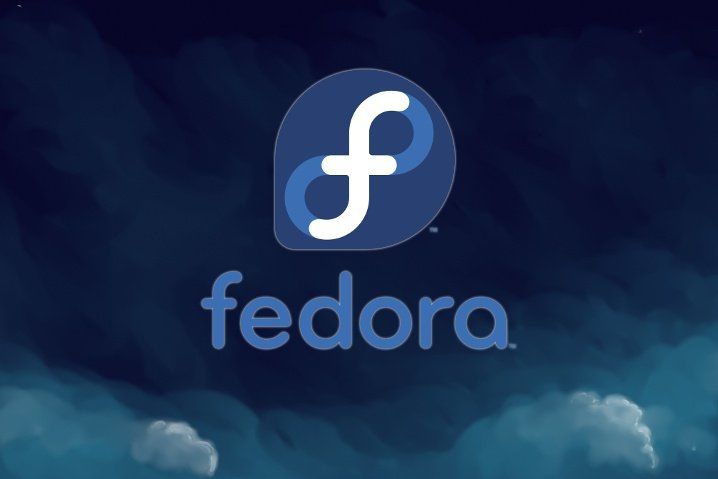

- #Fedora supertab how to#
- #Fedora supertab install#
- #Fedora supertab drivers#
- #Fedora supertab update#
Free software Foundation on Secure boot:.A customisation of these packages may require signing these using pesign to be able to boot on secure boot enabled machines.
 A Fedora remix or Fedora based distribution can ship the Fedora shim, grub2 and kernel unchanged. Fedora releases prior to Fedora 18 will refuse to boot until the user disables secure boot in the firmware. Fedora provides grub2, kernel and associated packages that are loaded by shim which is signed by Verisign (via Microsoft). Allow a physically present user to enrol their own keys in the firmware interface. Allow a physically present user to disable secure boot in the firmware interface. With the release of Windows 8, Microsoft has decided that all hardware that is marked "Windows 8 client ready" should: With the release of Windows 10, Microsoft has dropped the requirement secure boot to provide an option to be disabled and It can be disabled permanently by running: sudo mokutil -disable-validation Writing to MSRs through /dev/cpu/*/msr. Module parameters that allow setting memory and I/O port addresses. User-space access to physical memory and I/O ports. Hibernation and resume from hibernation. Using kexec to load an unsigned kernel image. Loading kernel modules that are not signed by a trusted key. Secure boot activates a lock-down mode in the Linux kernel which disables various features kernel functionality: Secure boot is a setup using UEFI firmware to check cryptographic signatures on the boot-loader and associated OS kernel to ensure they have not been tampered with or bypassed in the boot process. 4 Historical discussion - Steering Committee as of 2. Use of livecd-iso-to-disk on any distribution other than Fedora is unsupported and not expected to work: please use an alternative method, such as Fedora Media Writer. Even if it happens to run and write a stick apparently successfully from some other distribution, the stick may well fail to boot. Livecd-iso-to-disk is not meant to be run from a non-Fedora system. livecd-iso-to-disk on other Linux distributions
A Fedora remix or Fedora based distribution can ship the Fedora shim, grub2 and kernel unchanged. Fedora releases prior to Fedora 18 will refuse to boot until the user disables secure boot in the firmware. Fedora provides grub2, kernel and associated packages that are loaded by shim which is signed by Verisign (via Microsoft). Allow a physically present user to enrol their own keys in the firmware interface. Allow a physically present user to disable secure boot in the firmware interface. With the release of Windows 8, Microsoft has decided that all hardware that is marked "Windows 8 client ready" should: With the release of Windows 10, Microsoft has dropped the requirement secure boot to provide an option to be disabled and It can be disabled permanently by running: sudo mokutil -disable-validation Writing to MSRs through /dev/cpu/*/msr. Module parameters that allow setting memory and I/O port addresses. User-space access to physical memory and I/O ports. Hibernation and resume from hibernation. Using kexec to load an unsigned kernel image. Loading kernel modules that are not signed by a trusted key. Secure boot activates a lock-down mode in the Linux kernel which disables various features kernel functionality: Secure boot is a setup using UEFI firmware to check cryptographic signatures on the boot-loader and associated OS kernel to ensure they have not been tampered with or bypassed in the boot process. 4 Historical discussion - Steering Committee as of 2. Use of livecd-iso-to-disk on any distribution other than Fedora is unsupported and not expected to work: please use an alternative method, such as Fedora Media Writer. Even if it happens to run and write a stick apparently successfully from some other distribution, the stick may well fail to boot. Livecd-iso-to-disk is not meant to be run from a non-Fedora system. livecd-iso-to-disk on other Linux distributions #Fedora supertab install#
If your test boot reports a corrupted boot sector, or you get the message MBR appears to be blank., you need to install or reset the master boot record (MBR), by passing -reset-mbr when writing the stick. If you get this message from fdisk, you may need to reformat the flash drive when writing the image, by passing -format when writing the stick. Partition has different physical/logical endings If you get the message Need to have a filesystem label or UUID for your USB device, you need to label the partition: dosfslabel /dev/sdX LIVE.
#Fedora supertab update#
Information: Don't forget to update /etc/fstab, if necessary. Number Start End Size Type File system Flagsġ 32.3kB 1062MB 1062MB primary fat16 boot Sector size (logical/physical): 512B/512B Welcome to GNU Parted! Type 'help' to view a list of commands. Difference between Fedora and Red Hat Enterprise Linux.Installing, Configuring and Troubleshooting MySQL/MariaDB.
#Fedora supertab drivers#
Creating Windows virtual machines using virtIO drivers. Installing virtual operating systems with GNOME Boxes. Getting started with virtualization (libvirt). Upgrading Fedora using the DNF system upgrade. #Fedora supertab how to#
How to Set NVIDIA as Primary GPU on Optimus-based Laptops. How to join an Active Directory or FreeIPA domain. Getting started with Apache HTTP Server. 
Managing keyboard shortcuts for running an application in GNOME.Controlling network traffic with firewalld.Displaying a user prompt on the GNOME login screen.Understanding and administering systemd.Performing administration tasks using sudo.Configuring networking with NetworkManager CLI (nmcli).Disabling the GNOME automatic screen locking.Setting a key shortcut to run an application in GNOME.Configuring Xorg as the default GNOME session.Configuring X Window System using the nf file.Installing Chromium or Google Chrome browsers.Installing plugins for playing movies and music.APT command equivalents on Fedora with DNF.Securing the system by keeping it up-to-date.Adding or removing software repositories in Fedora.Finding and installing Linux applications.Creating and using a live installation image.







 0 kommentar(er)
0 kommentar(er)
